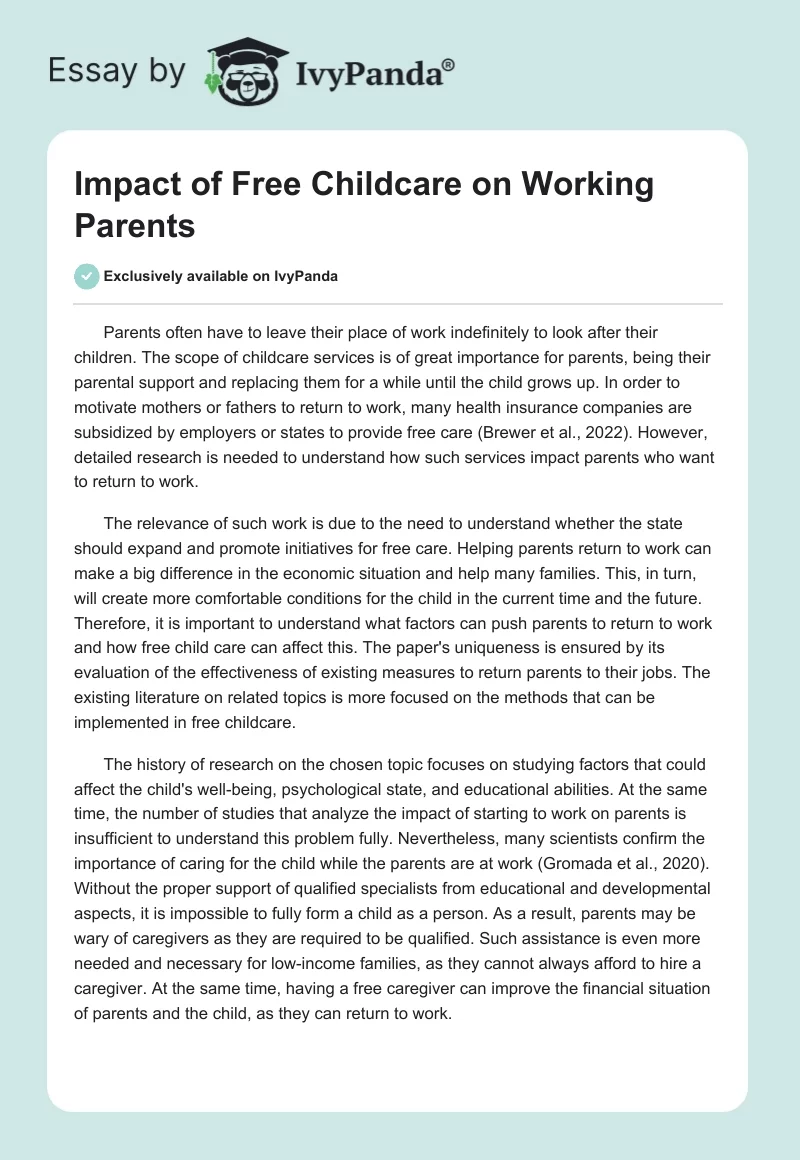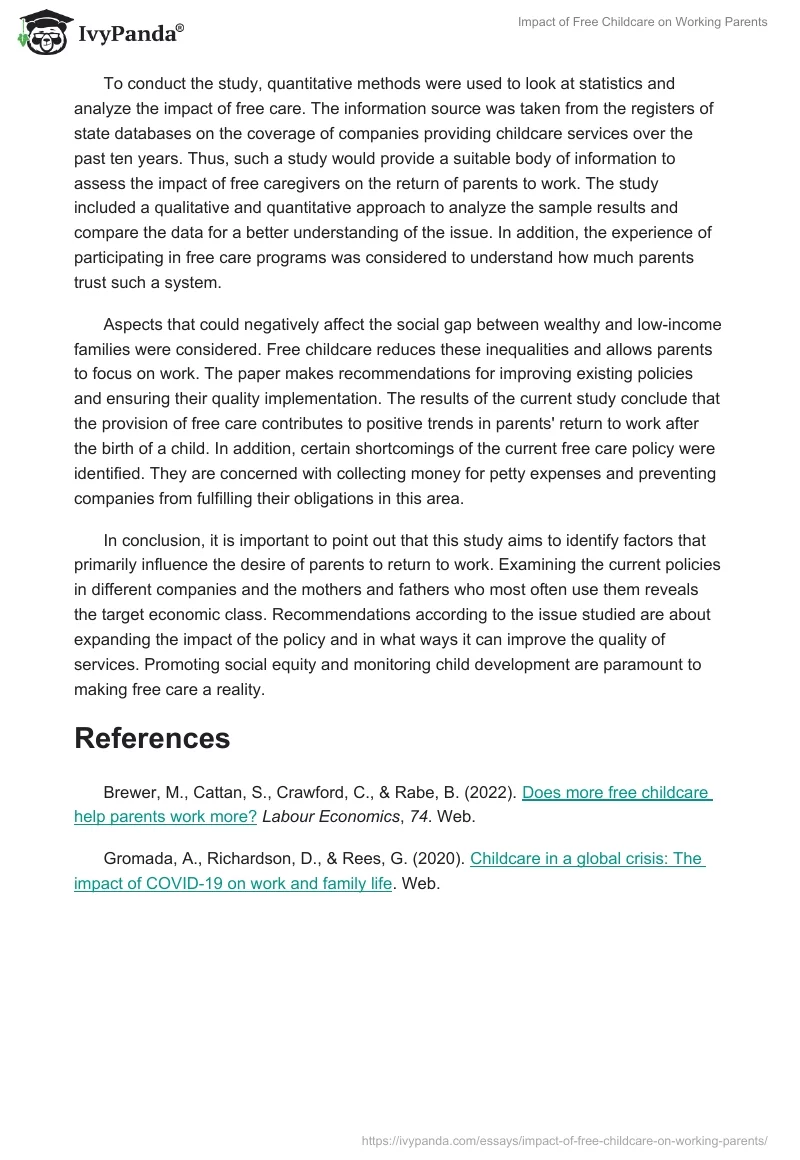Parents often have to leave their place of work indefinitely to look after their children. The scope of childcare services is of great importance for parents, being their parental support and replacing them for a while until the child grows up. In order to motivate mothers or fathers to return to work, many health insurance companies are subsidized by employers or states to provide free care (Brewer et al., 2022). However, detailed research is needed to understand how such services impact parents who want to return to work.
The relevance of such work is due to the need to understand whether the state should expand and promote initiatives for free care. Helping parents return to work can make a big difference in the economic situation and help many families. This, in turn, will create more comfortable conditions for the child in the current time and the future. Therefore, it is important to understand what factors can push parents to return to work and how free child care can affect this. The paper’s uniqueness is ensured by its evaluation of the effectiveness of existing measures to return parents to their jobs. The existing literature on related topics is more focused on the methods that can be implemented in free childcare.
The history of research on the chosen topic focuses on studying factors that could affect the child’s well-being, psychological state, and educational abilities. At the same time, the number of studies that analyze the impact of starting to work on parents is insufficient to understand this problem fully. Nevertheless, many scientists confirm the importance of caring for the child while the parents are at work (Gromada et al., 2020). Without the proper support of qualified specialists from educational and developmental aspects, it is impossible to fully form a child as a person. As a result, parents may be wary of caregivers as they are required to be qualified. Such assistance is even more needed and necessary for low-income families, as they cannot always afford to hire a caregiver. At the same time, having a free caregiver can improve the financial situation of parents and the child, as they can return to work.
To conduct the study, quantitative methods were used to look at statistics and analyze the impact of free care. The information source was taken from the registers of state databases on the coverage of companies providing childcare services over the past ten years. Thus, such a study would provide a suitable body of information to assess the impact of free caregivers on the return of parents to work. The study included a qualitative and quantitative approach to analyze the sample results and compare the data for a better understanding of the issue. In addition, the experience of participating in free care programs was considered to understand how much parents trust such a system.
Aspects that could negatively affect the social gap between wealthy and low-income families were considered. Free childcare reduces these inequalities and allows parents to focus on work. The paper makes recommendations for improving existing policies and ensuring their quality implementation. The results of the current study conclude that the provision of free care contributes to positive trends in parents’ return to work after the birth of a child. In addition, certain shortcomings of the current free care policy were identified. They are concerned with collecting money for petty expenses and preventing companies from fulfilling their obligations in this area.
In conclusion, it is important to point out that this study aims to identify factors that primarily influence the desire of parents to return to work. Examining the current policies in different companies and the mothers and fathers who most often use them reveals the target economic class. Recommendations according to the issue studied are about expanding the impact of the policy and in what ways it can improve the quality of services. Promoting social equity and monitoring child development are paramount to making free care a reality.
References
Brewer, M., Cattan, S., Crawford, C., & Rabe, B. (2022). Does more free childcare help parents work more?Labour Economics, 74. Web.
Gromada, A., Richardson, D., & Rees, G. (2020). Childcare in a global crisis: The impact of COVID-19 on work and family life. Web.


